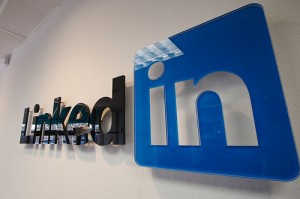LinkedIn reaches 100 million profiles, but so what?


It's a significant milestone for the company that is essentially the Web's default professional profile. CEO Jeff Weiner shared his pride in the network's reach in a blog this morning:
This isn't just a big milestone for us - it's also an important one for all of you, our members, who've helped build the LinkedIn network. We're most inspired that by connecting talent with opportunity at massive scale, we're changing people's lives in meaningful and sustainable ways. Each of our 100 million members has a unique story - from finding a job, to recruiting talent, to sourcing new deals, and even starting a business.
But a far-reaching network and 100 million profiles is a far cry from the default professional homepage and network that it needs to become. The truth is, most users treat LinkedIn like a document more than a network or platform. Like a resume, most professionals accept that they need a LinkedIn profile, maintain it when professional updates (promotion, job change, new credentials, etc.) necessitate and haphazardly acquire connections to anyone who asks or will accept. But few leverage the platform to network. Why? They have a perfectly well-suited social networking platform to communicate and forge bonds, even professional bonds -- Facebook, and they're already on that site. The average LinkedIn user visits the site 2.98 times per month (Quantcast); the average Facebook user checks in 41 times per month. More importantly, Facebook users spend than 12 minutes on the site every day.
LinkedIn knows the score. Deep Nishar, LinkedIn's senior vice president of products & user experience, said he wants the site to be users' "essential source of professional insight," something to invite repeat visits with engagement.
Two weeks ago the LinkedIn launched a quartet of new features designed to improve its regular utility for users and improve visitor engagement:
- Today, a content/news aggregator based on items shared by LinkedIn users.
- Signal, a search tool that allows users to search keywords in LinkedIn status updates and filter by attributes including your network, company and geography.
- InMaps, a map visualizer for your network
- Skills, a "homepage" of sorts for various skills listed by users that will display which companies are using those skills, the demand and prevalence for the skill, and ranked "influencers" from among those listed as possessing the skill.
Some of these are neat features. During the announcement, LinkedIn execs demonstrated to reporters how they could use Signal to investigate a company when news breaks. And the network itself, were users to apply it, remains its best asset, said Weiner.
For example, take Dutch tech consultant Henk Van Ess, who, after frustration with his 3G iPhone's battery life, used LinkedIn Groups to find partners and start a global business selling iPhone batteries. There's also, Barbara Lemaire who found key benefactors for her non-profit organization on LinkedIn, helping homeless women and children rebuild their lives. Then, there are the personal stories, like Alice Shapiro, who after losing her job and home, used a LinkedIn connection to help her become a published author.
But the truth is few of us are so savvy to use the network to that end. Instead, we make contact on LinkedIn and take the conversation offsite to Facebook or Gmail, platforms we use everyday anyway.
If LinkedIn is to win back its place in those conversations, it must improve its utility for users and increase visits per month and time spent on site. And it needs to do so before Facebook decides to switch on its own professional platform. (Facebook recently acquired job-search site Pursuit.)
The four newest features have yet to wow anyone and may not be the path to more frequent visits for the 100 million profiles.
Related Content: